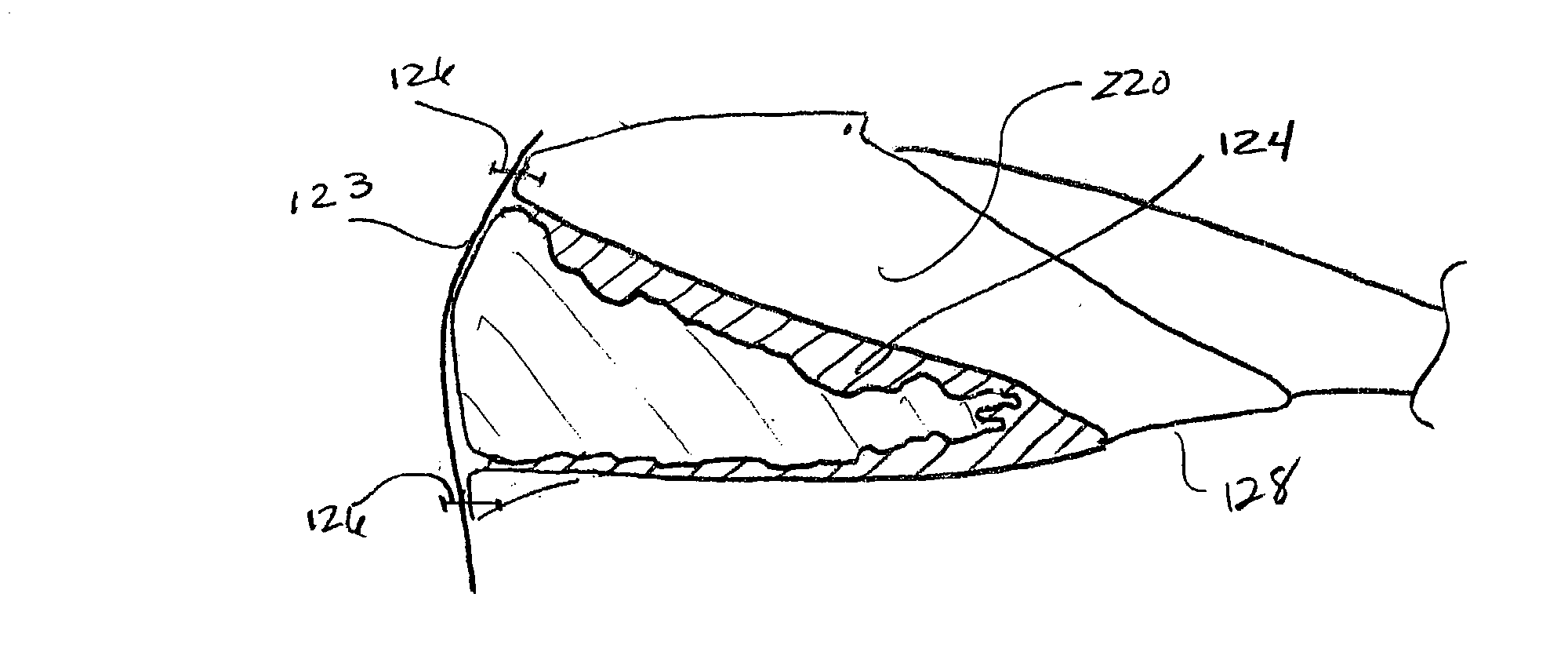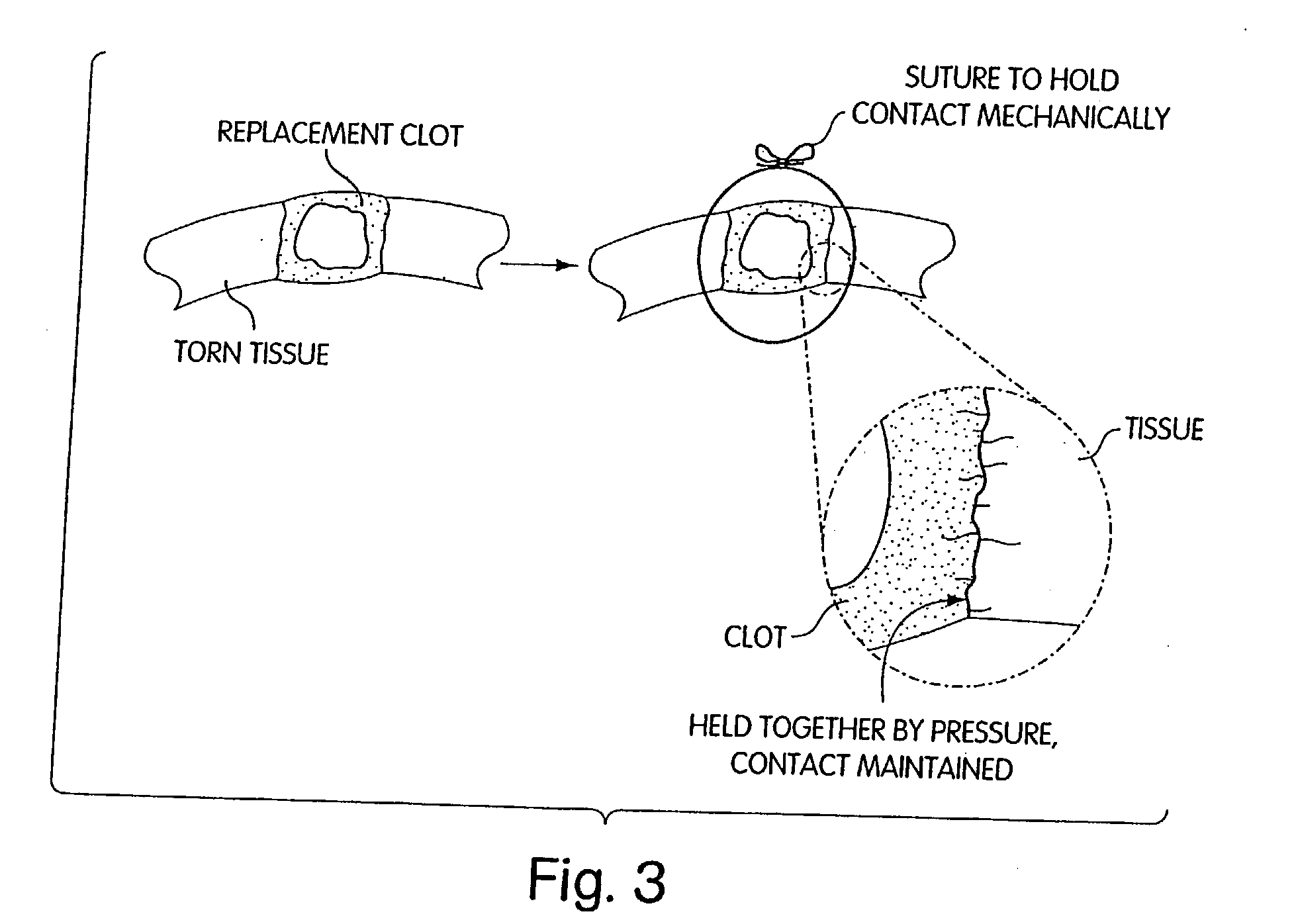Biologic replacement for fibrin clot
a technology of fibrin clot and fibrin clot gel, which is applied in the field of biochemical replacement of fibrin clot, can solve the problems of excessive tension force, meniscus, bone and articular cartilage in human joints that fail to heal after an injury, premature degradation of fibrin clot scaffold, etc., and achieves the effect of excessive tension for
- Summary
- Abstract
- Description
- Claims
- Application Information
AI Technical Summary
Benefits of technology
Problems solved by technology
Method used
Image
Examples
example 1
Fibroblast Distribution in the Anteromedial Bundle of the Human Anterior Cruciate Ligament
[0153] The purpose of this EXAMPLE is to confirm the presence of cells expressing a contractile actin isoform alph.alpha.-smooth muscle actin (.alpha.-sm; SMA), in the intact human anterior cruciate ligament, as shown by Murray & Spector, 17(1) J. Orthop. Res. 18-27 (1999). Actin is a major cytoskeletal protein associated with cell motility, secretion, phagocytosis, and cytokinesis. Actin is expressed in mammals as six isoforms which are coded by different genes and differ in their amino acid sequence. Two of the isoforms (.beta. and .gamma.) are found in practically all cells, while the other four (.alpha.'s) are thought to represent differentiation markers of muscle cells. The .alpha.-sm actin isoform is associated with the contractile phase of healing in several connective tissues, including dermis, cornea, tendon and medial collateral ligament. This isoform has also been associated with cel...
example 2
Fibroblast Migration into the Anteromedial Bundle of the Human ANTERIOR CRUCIATE LIGAMENT IN VITRO
[0160] The purpose of this EXAMPLE was to confirm that human ligament fibroblasts can migrate into collagen-glycosaminoglycan copolymers in vitro.
[0161] Methods. Fifteen intact anterior cruciate ligaments were obtained from total knee arthroplasty patients, ages 54 to 82 years. Four of the ligaments were used solely for histology and immunohistochemistry. The remaining ligaments were sectioned into fascicles that were divided transversely in the midsubstance to make explants. The highly porous collagen-glycosaminoglycan matrix, composed of type I bovine hide collagen and chondroitin-6-sulfate, was prepared by freeze-drying the collagen-glycosaminoglycan dispension as described by Murray & Spector, in 45.sup.th Annual Meeting, Orthopaedic Research Society, Anaheim, Calif. (1999). The average pore size of the collagen-glycosaminoglycan scaffold was 100 .mu.m. Sample of the collagen-glycos...
example 4
Scaffold Optimization for Healing of the Ruptured Human Anterior Cruciate Ligament
[0192] The purpose of this EXAMPLE is to demonstrate the process of fibroblast-mediated tissue regeneration, to determine the effect of cross-linking of a collagen-based scaffold on (a) the rate of fibroblast migration; (b) the rate of fibroblast proliferation; (c) expression of a contractile actin; and (d) the rate of type I collagen synthesis by fibroblasts in the collagen-based scaffold. This EXAMPLE is also intended to determine the effect of addition of selected growth factors on these same outcome variables. The results of this EXAMPLE can be used to determine how specific alterations in scaffold cross-linking and the addition of specific growth factors alter the fibroinductive properties of a collagen-based scaffold. For the purposes of this EXAMPLE, the fibroinductive potential of the scaffold is defined as its ability to promote fibroblast infiltration, proliferation and type I collagen synthe...
PUM
| Property | Measurement | Unit |
|---|---|---|
| angle | aaaaa | aaaaa |
| angle | aaaaa | aaaaa |
| length | aaaaa | aaaaa |
Abstract
Description
Claims
Application Information
 Login to View More
Login to View More - R&D
- Intellectual Property
- Life Sciences
- Materials
- Tech Scout
- Unparalleled Data Quality
- Higher Quality Content
- 60% Fewer Hallucinations
Browse by: Latest US Patents, China's latest patents, Technical Efficacy Thesaurus, Application Domain, Technology Topic, Popular Technical Reports.
© 2025 PatSnap. All rights reserved.Legal|Privacy policy|Modern Slavery Act Transparency Statement|Sitemap|About US| Contact US: help@patsnap.com



